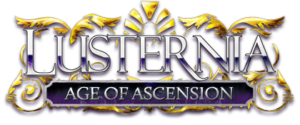Four Lovesongs to Fair Cities
I’m a city girl.
I was born in the Midwest, in a city more renowned for snow than for the wide and varied gardens, broad, placid lakes, and the multitude of bookstores scattered across the glacial landscape. When I moved for the first time, it was to the outskirts of another city, one of the first cities of America, Washington DC. When I moved again, this time to the country, I could only stay a year before I moved again, this time to San Francisco.
I can’t live in the country. It’s broad and green and stretches on between towns, filled with vineyards, canyons, wind farms, mile after mile of highway, dead mines, ghost towns and low sodium lights. It’s a place full of adventure, but when I come home, I want to walk a block to the nearest coffeeshop, catch the bus to a good bookstore, stumble my way out of a bar, hail a cab, and leave my truck parked somewhere precarious.
When I first started working on MUDs, early in my 20s, one of the first assignments I had was to take a pacifistic, hippie child city and make it more realistic, more visceral. At first, I thought this meant slapping some fantasy towers and flagstones up, slapping on some descriptions ripped off from murals in Italian restaurants, and be done with it. This resulted in better, but not great cities. There was something essential, something completely mundane missing.
I’m talking the grit. I’m talking the stench. I’m talking about the little things, like the mailboxes, stray cats, yelling people, and graffiti. Then there’s the Victorian houses, the broad, usually-pillared facades of post offices. The way streets in old cities aren’t grids, they’re twisting tracks drawn by horse hooves or just people on the way to market – and houses just spring up around these intrusions.
Unsurprisingly, when I got started in Lusternia, I played city characters as a rule. Oh, sure, I alted – the occasional foray into Serenwilde or Glomdoring – but my characters are, perhaps, too much like me in that they’re creatures of a chaotic, imperfect, civilized cityscape. Better yet if I could work on the contradictions.
In Celest, for example, there’s zealotry, conflict avoidance, and the juxtaposition of the last remnants of an oppressive empire. In Hallifax, the beauty, the orderly lines, and the dystopian Collectivism. In Magnagora, the idea that evil rarely thinks it’s evil. And finally, in Gaudiguch, bastion of freedom, the definition of freedom, festivals, and free will, is balanced with the deep-rooted manipulations of the Illuminati.
As a result, I find myself reading a lot of gritty books, love songs to cities that I’ve known or dreamt. What can I say – I’m just not one for the country.
One of the ones that’s at the top of my list to read is Palimpsest, by Cathrynne Valente. This book spans multiple cities – Kyoto, Kiev, San Francisco, and Rome – but is really about a living, breathing city of dream logic, lovers, and most of all, stories. This book captures more than anything the interlocking stories of those who live in a city – of those background characters who are really the ones who make up the vast and varied tapestry of life we live in.
Second on this list is a book from my home town. War For the Oaks is an Emma Bull classic from the eighties. It’s full of Seelie and Unseelie fae in motorcycle jackets dueling for control of greenhouses, punk rock clubs, and the occasional downtown fountain. Listen to Prince if you delve into this one, and maybe watch some Highlander beforehand to get into the right mood.
Third is a relatively recent publish by a friend of mine. This one is e-book only – The New York Magician by J.B. Zimmerman. J.B, like me, was born and raised in a city. Except he, lucky sod, was born in New York city. Therefore, his protagonist, Michel, occupies the same landscape as he negotiates with Lovecraftian gods, works with Baba Yaga, and finds ways to keep Egyptian gods of the flood from drowning Manhattan.
And lastly, I started reading City of Roses by Kip Manley as an online serial when I lived on the East Coast, but it’s recently been put into dead tree format. You can still read the bulk of it online, but it’s worth it to support independent authors and get the lovingly-bound first volume of stories. For those of you that are fond of War for the Oaks, happen to like Utena, and grew up in the 90s and early aughts, you’ll enjoy this disillusioned slacker become modern sword and scorcery adventure in the City of Portland.

